Hello everyone! :)
Hope you are all well and you're having a great week. Today I will show you some photos of my hometown, and of course I will also write little bit about it.

Rijeka in Croatian means river, Fiume in Italian, Reka in Slovenian Reka or Rika in the Chakavian dialect that's used in Rijeka and nearby places. In Hungarian, was originally Szentvit, but was later changed to Fiume. In German, Rijeka was called Sankt Veit am Flaum or Pflaum. All the mentioned ancient and modern denominations mean "river" in their languages: the reference is to the river Riječina also known as Fiumara, Tarsia, Réčina and Pflaum, which passes through the city and once divided it into two parts, dividing it into two states.

The city of Rijeka in the north of the Adriatic is also the largest Croatian port, and 3rd largest city in the country. As early as the 19th century, the Hungarian government developed Rijeka into one of the largest European ports and a powerful industrial center due to its ideal geographical position and the depth of the sea in the Kvarner Bay.
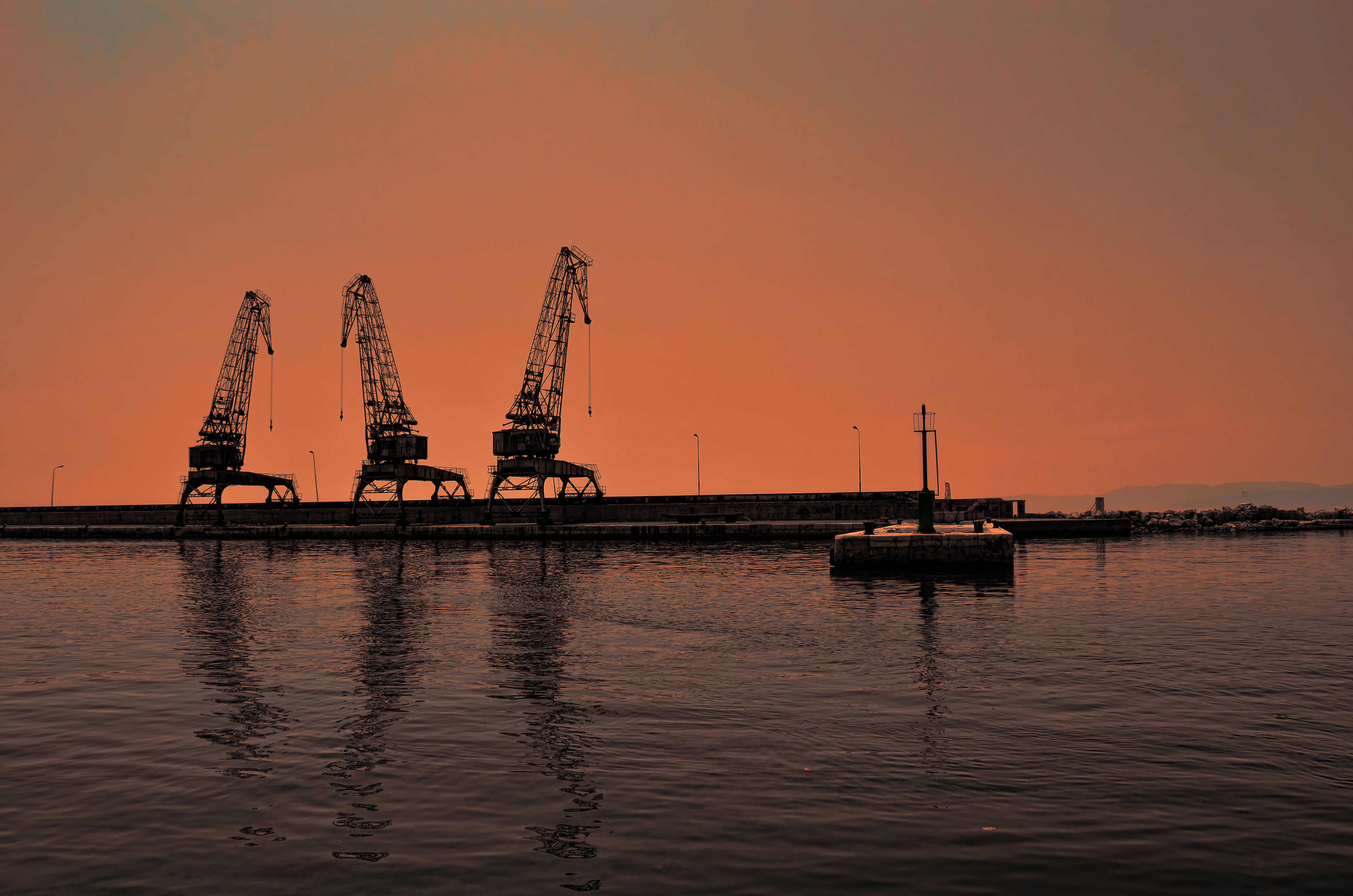
In the Middle Ages and early modern period, Rijeka developed into a port city under Habsburg rule. Rijeka could not expand its trade activities due to the sea blockade of the much stronger and more developed neighbors of the Republic of Venice. That city-state, on the opposite side of the Adriatic coast, declared itself the master of the Adriatic area, which was also called Golfo di Venetia. The port of Rijeka was used for small ships sailing along the coast under the Habsburg government.
A new period in Rijeka's history began with the Habsburg Emperor Charles IV, who, due to changes in global politics, gained the power to break Venetian domination and declare free navigation in the Adriatic Sea.
The Rijeka paper factory, known as "Hartera" during 180 years of continuous production, has experienced wars, floods, fires and economic crises, which used to shake it, but its owners would always succeed it to work with new financial investments. Until the 1990s, the factory operated successfully. After that came difficult war and post-war times from which she could no longer escape. Outdated technology and the loss of the market led to the dismissal of workers and eventually to the closure of the plant. It still stands, even though visibly destroyed, serves as a time-machine, for people to relive history.

Mrtvi kanal (Dead Channel) is the name for the old canalized riverbed of the river Rječina in Rijeka. Rijeka has suffered from the floods of the Rječina for centuries. After a strong flood, stronger than the previous ones, whose waters reached Korzo, it was decided to regulate the river by digging a new riverbed in the direction chosen by the river when its highest water level. With a large investment, this excavation was made in 1854 - 1855, so that sea water was released into the old riverbed, so the Dead Channel was created, and the new riverbed took Rječina straight into the sea. To this day, the Dead Channel serves as a port for boats and smaller ships.
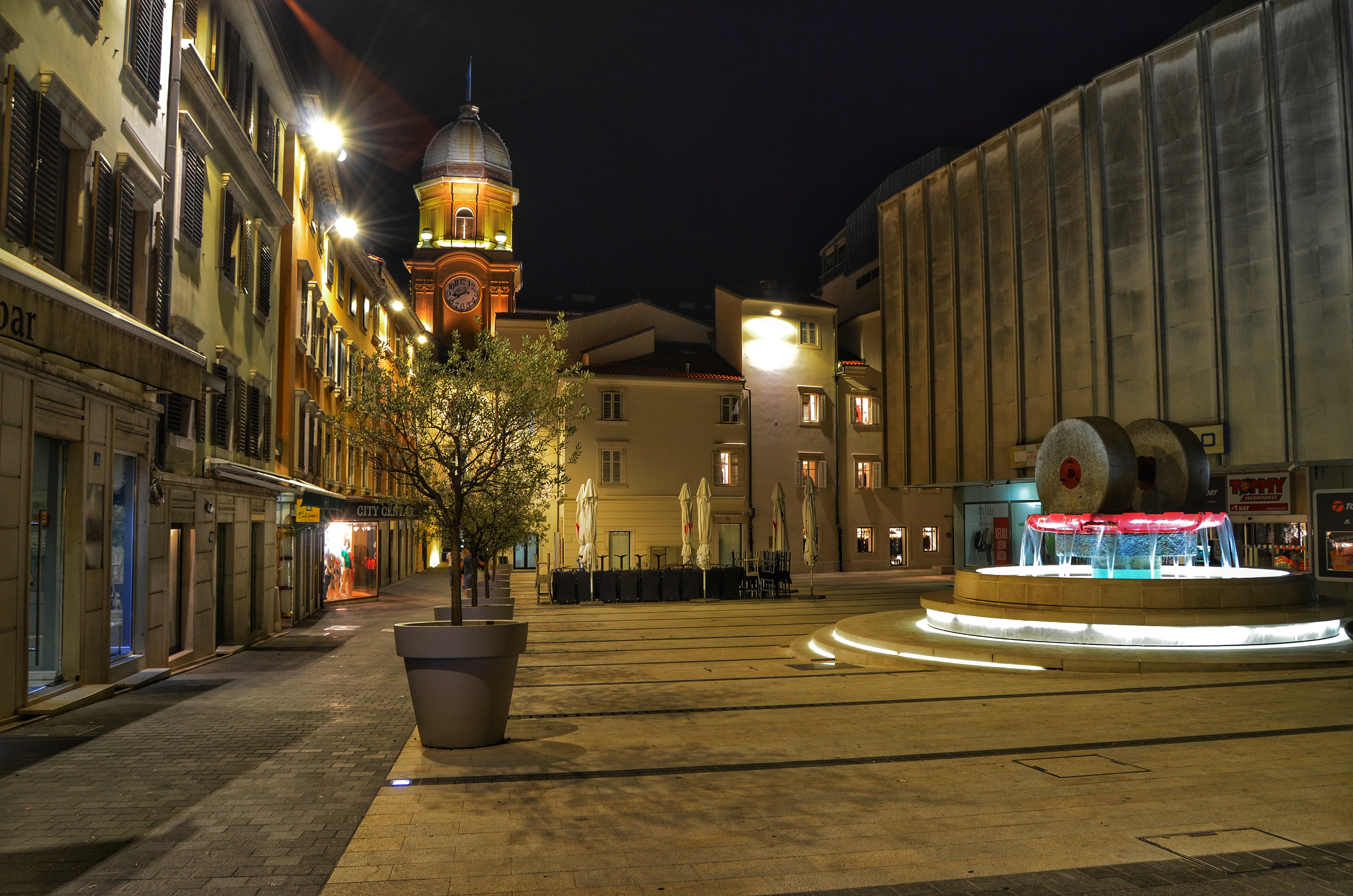
On this photo you can see Rijeka clocktower, called Gradska ura, in the background. Until the end of the 18th century, Rijeka was surrounded by ramparts, within which the entire public, cultural and economic city life took place. Rijeka was entered under the "Sea Gate" and the "Upper Gate", which were reached via a wooden bridge over a trench filled with water. In the 17th century, the tower was raised, and a clock was placed on it, and the name Gradska ura (City clocktower) was adopted. The citizens of Rijeka scheduled meetings "sotto la torre" or under the clock. The tower was also decorated with inscriptions, coats of arms and busts of Habsburg rulers. Thus, above the front door is a Habsburg double-headed eagle and an inscription from 1695. There are inscriptions on the architrave, one of which evokes the memory of Leopold I. On June 6, 1659, he granted Rijeka the coat of arms of a double-headed eagle, with both heads, heraldically unusually turned to the same side, as it stands on a vessel from which water flows. Below the coat of arms is the motto INDEFICIENTER (meaning inexhaustible).
Here you can see the fountain that represents the flowing of the river, and as we explained before river on croatian is Rijeka, the name of this magnificent city. The fountain was erected in 1974 on Kobler Square, in the past Piazza dell 'Erbe, the center of the city's commercial and political life within the city walls. The square housed the City Hall, three pharmacies, a cafe and several shops. In the 19th century, it lost the significance of the current town square, as all the public and economic life of the town moved to the newly built Promenade. The square has been turned into a green market. During World War II, the western part of the square was destroyed in a bombing raid.

Trsat castle is a strategically protruding lookout point on a 138 meter high hill that dominates Rijeka. It was first mentioned as the seat of the parish in 1288. From prehistoric times, there was a Liburnian observatory from where the road from the interior to the sea was controlled. The Romans were well served by this location at the time of the strengthening of the defense system, the so-called Liburnian Limes, whose starting point was Tarsatika, a city-fortress, on the site of today's Rijeka Old Town.
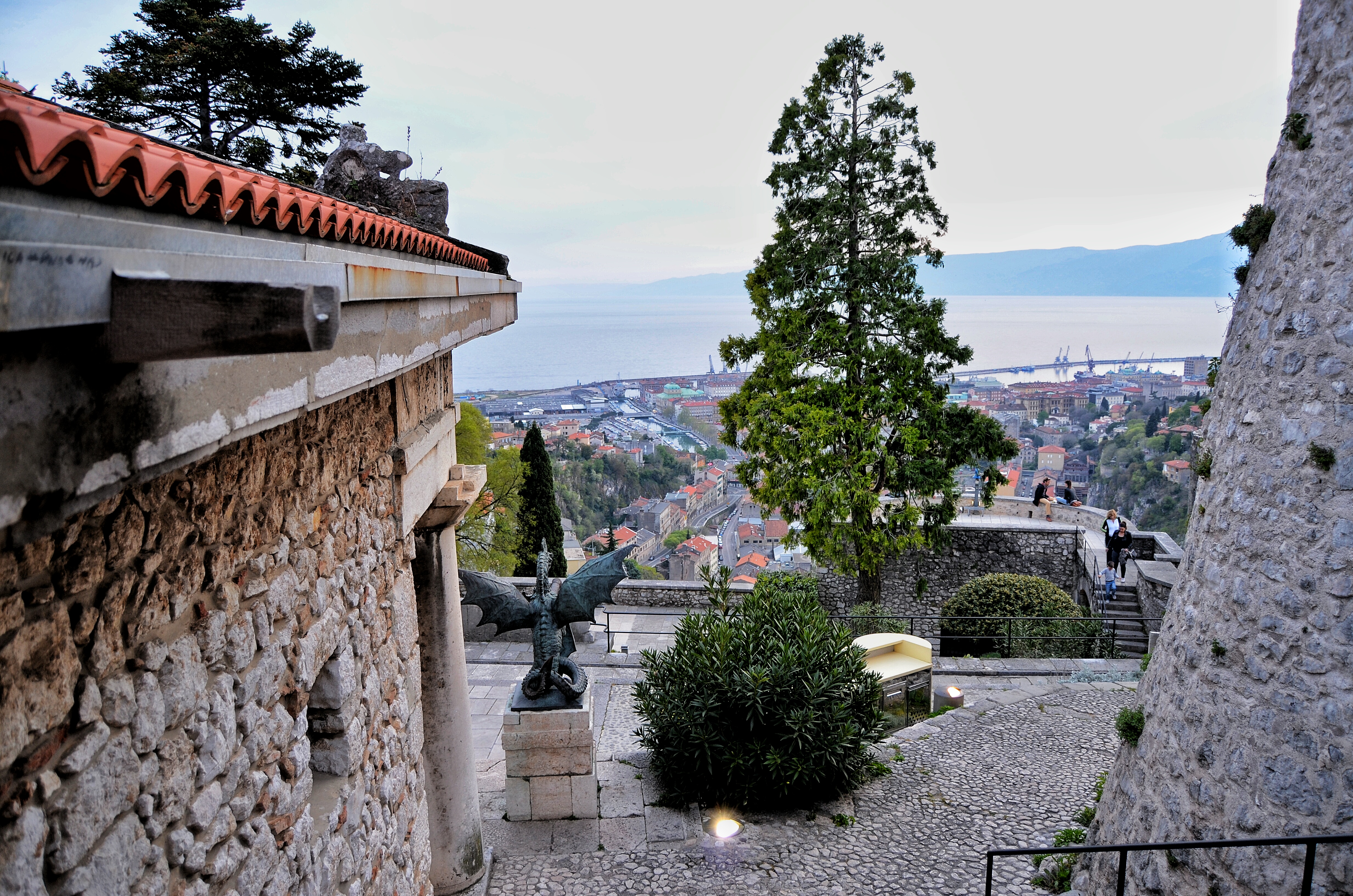
A colossal view of the remains of this limes on the opposite hills, as well as the entire area of Rijeka's Old Town, is comprehensively extended from the plateau of Trsat castle. Trsat Castle is one of the oldest fortifications on the Croatian coast, which preserves the features of early medieval urban planning. Today, Trsat castle is enriched with a coffee bar "Vintage", a gallery space with art exhibitions, themed events, summer concerts and outdoor theater performances.
Trsat dragons with rooster heads are actually two basiliscs - mythical creatures with the characteristics of a snake, dragon and rooster, or their cocatris cubs that killed with their eyes, even their own parents, and the only way to destroy them was to plant a mirror for them, because they would then perish from their own gaze.
The little monsters were part of the noble coat of arms of the Nugent family (former owners of the Trsat castle), and their sculptures on the Trsat hillfort were cast in Fernkorn's Imperial-Royal Foundry in Vienna. Each sculpture is 1.40 meters high, and the range from the top of the crest to the end of the tail is 3.80 meters.
According to folk tradition and written chronicles, on May 10, 1291, the birthplace of the Blessed Virgin Mary miraculously arrived on the hill of Trsat from Nazareth. The house remained there for three years and in an equally miraculous way moved to the Italian town of Loreto (December 10, 1294), where it is still located today. This event so impressed the local people that people immediately began to make a pilgrimage to the hill of Trsat.
Hearing what had happened, the then owner of the local land, Prince Nikola Frankopan, personally came to Trsat to see for himself the authenticity of what he had heard. Immediately afterwards he sent a mission to Palestine which, upon his return, informed him of what they had learned and seen there. Namely, at the same time, Mary's birthplace in Nazareth disappeared and no one knew how.

Korzo is the center of Rijeka, its most famous street and place of public events. In history, this street was covered by the sea, and today it is full of shops and cafes where citizens of Rijeka drink coffee with tourists from all over the world.

Interesting facts related to Rijeka:
The first torpedo was made in Rijeka. It was designed and built by Ivan Vukić, a naval captain, and Robert Whitehead, an English engineer.
For the first time in history, a rifle bullet was photographed in Rijeka. It was done by Dr. Peter Salcher.
The first football match in the area of today's Croatia was played in Rijeka in 1873.
In 1907, the Rijeka surgeon Anton Grossich was the first in the profession to introduce the use of iodine tincture in preparation for surgical procedures.
The first communal cemetery in Europe was built in Rijeka.
The first newspaper printed in Italian (including Italy) "Notizie del giorno" was published in Rijeka.
The first state to recognize Lenin's Bolshevik Russia was D'Annunzi's Italian administration of Kvarner.
The first international football match on the territory of today's Croatia was played in Rijeka in 1905 between the club Atletico Fiumano and the club from the ship SS Slavonia, the company Cunard Line, which sailed on the line Rijeka - New York.
Laval Nugant opened the first museum in Croatia in Trsat. The collection ended in Zagreb and was never returned.
In 1896, the first chocolate factory in the Balkans was opened in Rijeka.
In 1905, the 1st car garage was built in the area of Southeast Europe of unique architecture with 14 boxes of oriental Art Nouveau style.
Rijeka was an independent state from September 8, 1920 to January 24, 1924.
In 1919, US President Woodrow Wilson proposed Rijeka as the seat of the League of Nations - the forerunner of the United Nations.
People from Rijeka who were born in 1913 and lived through 1991 changed 6 countries: Austria-Hungary, the Free State of Rijeka, the Kingdom of Italy, the Third Reich (Germany), SFR Yugoslavia and finaly the Republic of Croatia.

Rijeka was last year's European city of culture and it still proudly stands as a city of diversity, freedom and love.

I really hoped that you've had a glimpse into the beauty of my hometown, and I would really like for you to visit. If you dare to do so, drop a comment.
I thank you for reading my post about my hometown, and I hope you liked it.
Have a nice week, and stay safe!

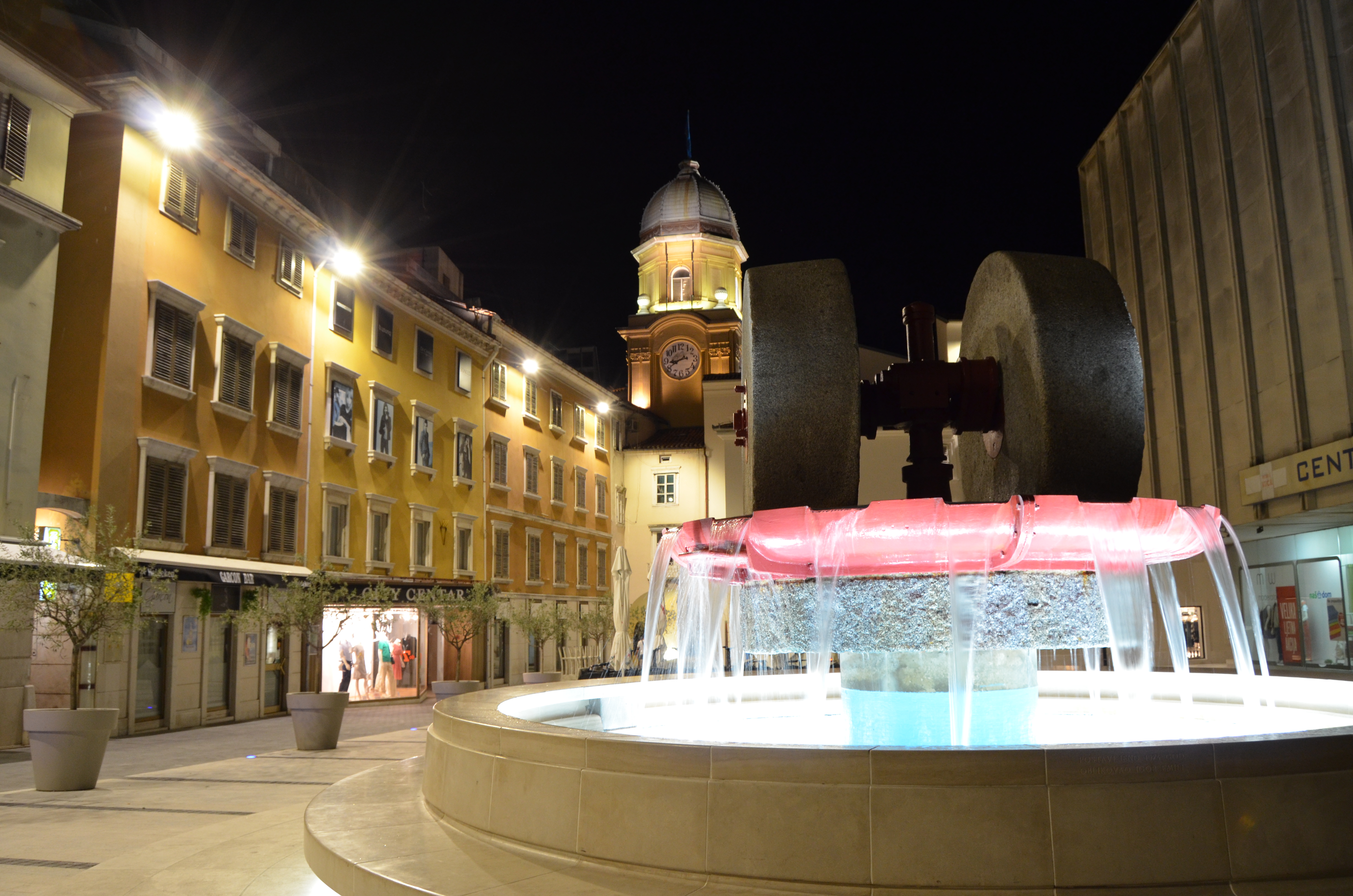

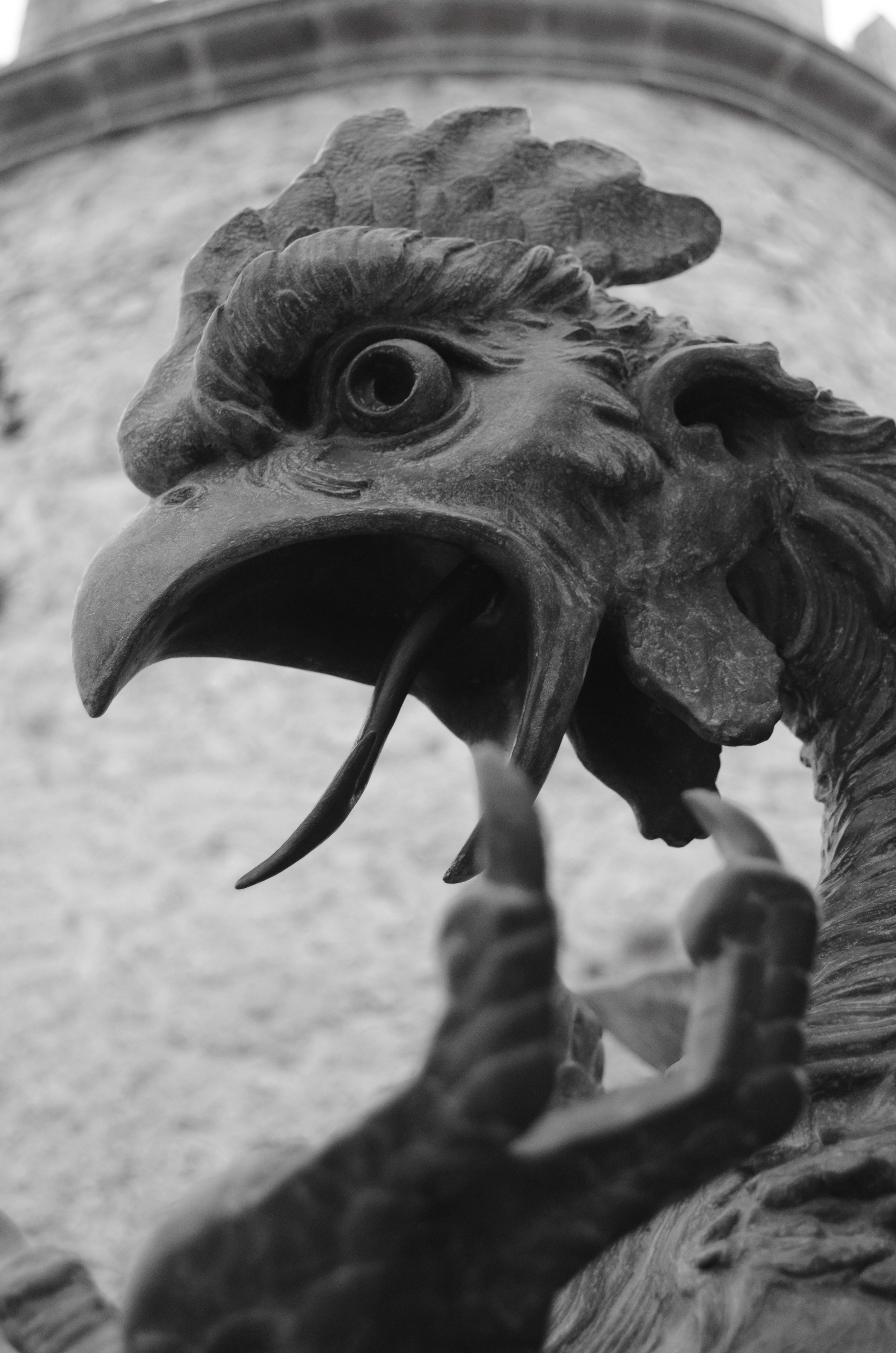
.JPG)
Your hometown is beautiful and rich in history. Thank you for sharing us a glimpse of your hometown.
Thank you so much for your kind words. It was my pleasure to share it with you, and I'm so happy you enjoyed it. 👋😊
You're welcome (^_^)
Congratulations @lensational! You have completed the following achievement on the Hive blockchain and have been rewarded with new badge(s) :
Your next payout target is 100 HP.
The unit is Hive Power equivalent because your rewards can be split into HP and HBD
You can view your badges on your board and compare yourself to others in the Ranking
If you no longer want to receive notifications, reply to this comment with the word
STOPTo support your work, I also upvoted your post!
Check out the last post from @hivebuzz:
Congratulations, your post has been added to Pinmapple! 🎉🥳🍍
Did you know you have your own profile map?
And every post has their own map too!
Want to have your post on the map too?
A beautiful city and rich history.
I like the colors of the sunset in this photo)
Thank you so much 🤗. Sun makes miracles, even on architecture.
You are welcome :)